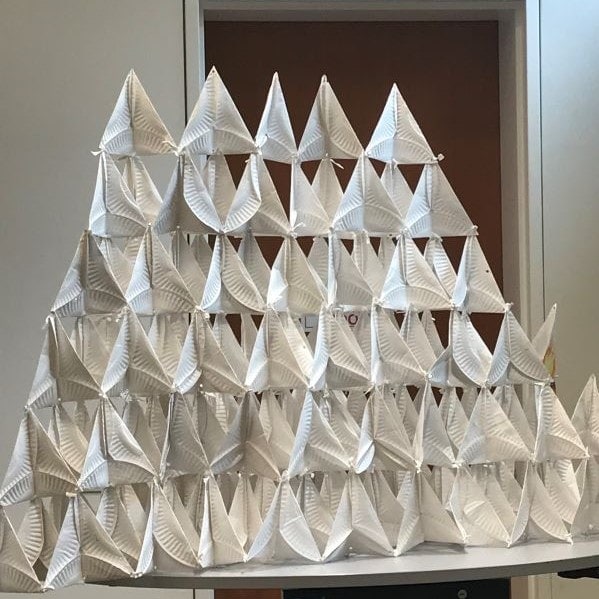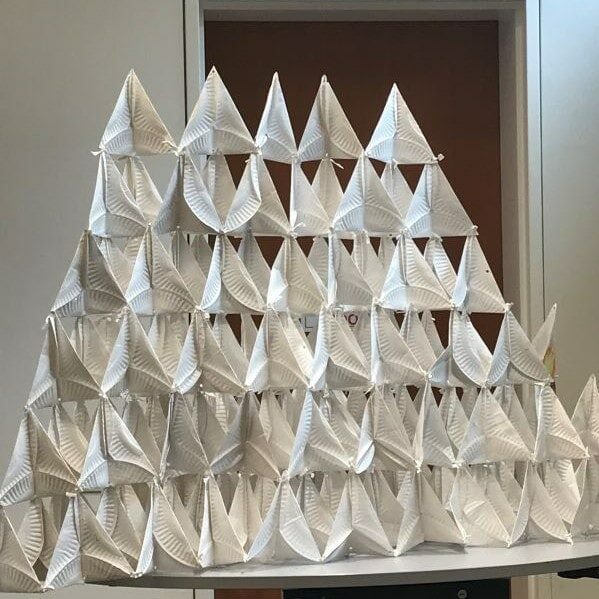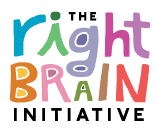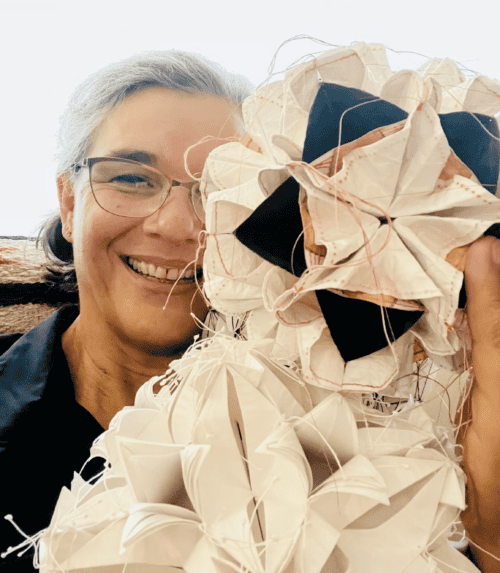We are mostly familiar with drawing circles but folding circles moves that experience from flat and representational into 3-D form. Circlefolding is a technology with which to explore the natural rhythms and structural pattern expressed throughout life and observed in the arts, sciences, geometry, math, philosophy, and social and inner wellbeing. The circle is timeless and universal, literal, metaphorical, spatial, and a social expression of human experience that demonstrates diversity is unity.
Students sequentially and proportionally fold paper circles to reveal form in space through relationship and movement. Without adding or taking anything away from the circle – no cutting, measuring or formulas – multiple folded circles can be joined to form endless systems of increasing complexity, possibility, and application. Beginning with forming the sphere, this exploration of circles unfolds creative directions that are as individual as the folder.
Students may work individually and/or together; informal group sharing gently supports the learning process throughout as students notice, interpret and reflect on how the circle informs their experiences and resonates with or differs from others. Students utilize spatial visualization, processing of mental representations of shapes and relationships as well as strengthening observational and critical thinking, creative problem solving, community building, social-emotional development, fine motor control and hand-eye coordination.
Circlefolding is a comprehensive manipulative tool new to everyone and can be useful beyond the teaching residency for teachers and students alike. For more information about folding circles, please visit: Radicalcirclearts.com
Projects
The beauty of circlefolding is that it is an open-ended process that follows the experience of each folder and can be facilitated in a myriad of ways depending on the learning community’s needs. Formal and informal discussions of students’ observations and reflections can be guided to center on specific topics, for example SEL, Geometry, Biology, Math, personal and social well-being, while weaving in contextual vocabulary and prompts.
Accessible to all learning styles, folding circles offers an intuitive and whole-bodied approach to learning geometry and math and naturally integrates with art, music, biology, science, philosophy and inner/social well being. Ash is adept at collaborating with teachers to customize a program for any curriculum, topic or project using circlefolding as a fresh non-traditional framework .
Ash enjoys working with teachers’ needs and students’ interests to shape each residency. The culmination of the process over the duration of the residency can be individual and/or collaborative in nature. A variety of emerging projects can result in simple and complex sculptural pieces, circlebooks, the platonic solids, 3-D Mandalas, torus rings and much more. This may feature illustrations, text or geometric surface designs using a variety of mark making tools, for example.
This program offered by: Ash R Smith




